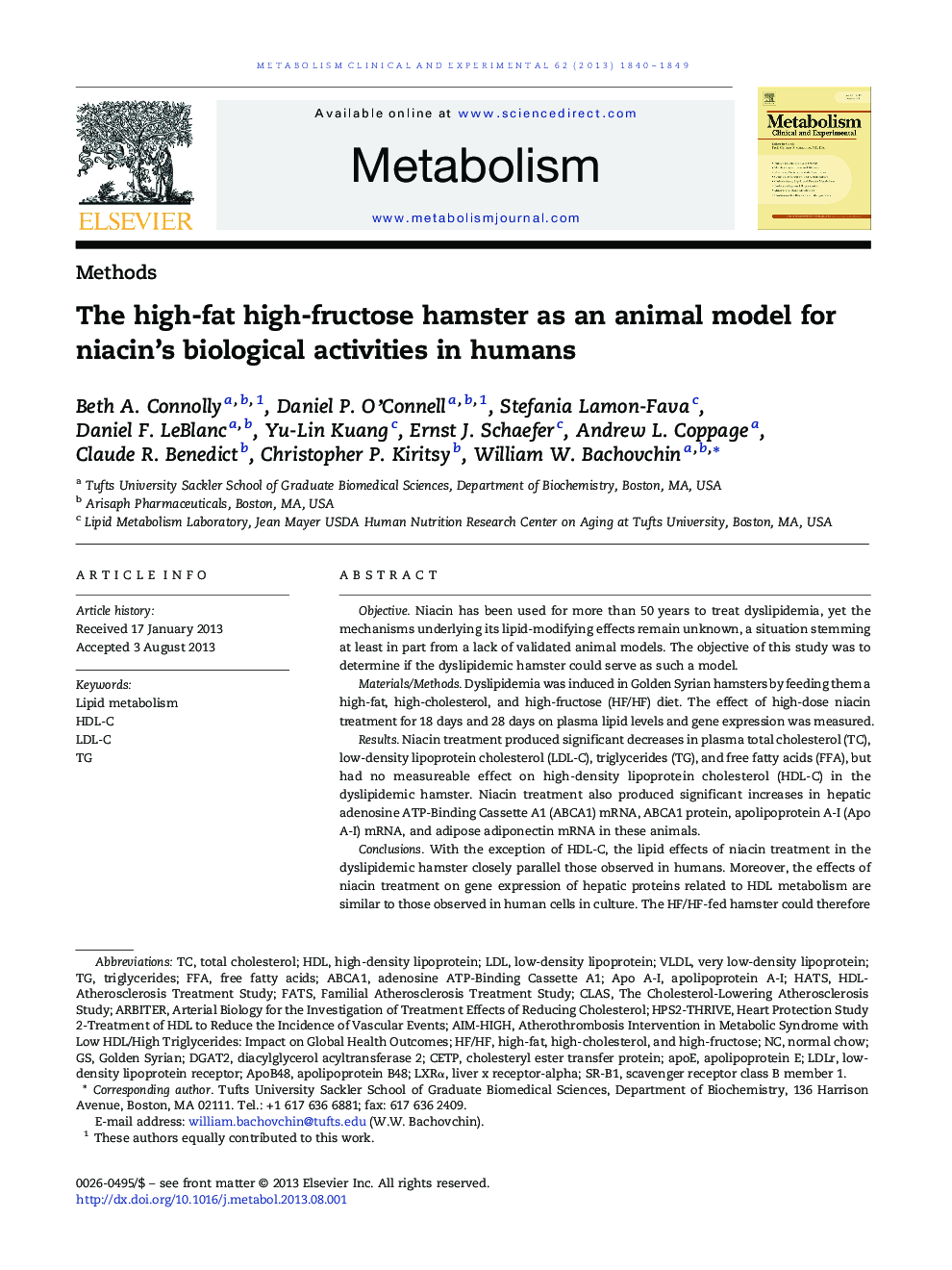| Article ID | Journal | Published Year | Pages | File Type |
|---|---|---|---|---|
| 2805704 | Metabolism | 2013 | 10 Pages |
ObjectiveNiacin has been used for more than 50 years to treat dyslipidemia, yet the mechanisms underlying its lipid-modifying effects remain unknown, a situation stemming at least in part from a lack of validated animal models. The objective of this study was to determine if the dyslipidemic hamster could serve as such a model.Materials/MethodsDyslipidemia was induced in Golden Syrian hamsters by feeding them a high-fat, high-cholesterol, and high-fructose (HF/HF) diet. The effect of high-dose niacin treatment for 18 days and 28 days on plasma lipid levels and gene expression was measured.ResultsNiacin treatment produced significant decreases in plasma total cholesterol (TC), low-density lipoprotein cholesterol (LDL-C), triglycerides (TG), and free fatty acids (FFA), but had no measureable effect on high-density lipoprotein cholesterol (HDL-C) in the dyslipidemic hamster. Niacin treatment also produced significant increases in hepatic adenosine ATP-Binding Cassette A1 (ABCA1) mRNA, ABCA1 protein, apolipoprotein A-I (Apo A-I) mRNA, and adipose adiponectin mRNA in these animals.ConclusionsWith the exception of HDL-C, the lipid effects of niacin treatment in the dyslipidemic hamster closely parallel those observed in humans. Moreover, the effects of niacin treatment on gene expression of hepatic proteins related to HDL metabolism are similar to those observed in human cells in culture. The HF/HF-fed hamster could therefore serve as an animal model for niacin’s lowering of proatherogenic lipids and mechanisms of action relative to lipid metabolism.
